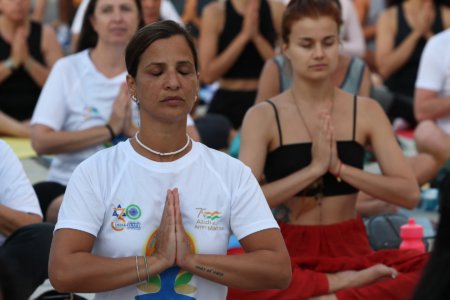
Studying abroad in college or university is a challenge in itself. Adjusting to a new environment while juggling classes and meeting new friends can make it an even stressful time.
On top of that are changing seasons and dropping temperatures that can greatly affect your mood. Some students might find the transition into shorter days with less sunlight harder to adjust. There’s a term for this: seasonal depression.
Seasonal depression can end up taking up an extra toll on students’ mental and physical well-being which may result in a domino effect. It can span across everything — snowballing from having a decrease in energy to struggling to complete assignments and having low self- confidence.
Does this sound familiar? Don’t worry — you’re not alone. Seasonal depression affects 5% of people in the US at any given year and it affects some people more than others. Read on to find out what Seasonal Affective Depression (SAD) is and four ways to manage it as an international student.
Seasonal depression and its symptoms

Seasonal Affective Depression (SAD) or seasonal depression is directly influenced by the changing seasons. Source: Philippe Huguen/AFP
Seasonal Affective Depression (SAD) or more commonly known as seasonal depression, is a type of depression directly influenced by the changing seasons. With shorter days and decreased exposure to sunlight, your body produces less serotonin (the “feel-good chemical”) and will instead produce more of the sleep-regulating hormone melatonin.
Although SAD occurs over both summer and winter, summer depression is less likely to happen than winter depression. Apart from factors like genetics and health, here are a few more reasons why this happens:
- Your biological clock is thrown off by seasonal changes. Whether there’s less daylight or more daylight hours, your body clock gets confused and sets off depression.
- A drop in daylight time causes serotonin levels to drop which in turn causes depression.
- Sleep deprivation along with high melatonin levels also play a role in causing a depressive state of mind.
With seasonal depression happening more commonly during the summer and the winter, each has its varying symptoms. Winter SAD or summer depression symptoms to look out for may include: oversleeping, appetite changes (craving for foods high in carbohydrates), weight gain, tiredness or low energy. On the other hand, spring and summer SAD symptoms may include: insomnia (trouble sleeping), poor appetite, weight loss and agitation or anxiety.
Ways to manage SAD
There are various ways to go around managing seasonal depression. Among the solutions are medications or going for phototherapy (light therapy), but these can often be expensive for students. Rest assured, there are more natural home remedies to beat SAD.
 Doing regular exercises is one of the most effective ways to alleviate SAD. Source: Sara Kauss/AFP
Doing regular exercises is one of the most effective ways to alleviate SAD. Source: Sara Kauss/AFP
Do regular exercises
It may be common knowledge that exercising improves your overall well-being. Exercising regularly is one of the most effective ways to alleviate SAD. Get your body moving by going for a walk or even just break a sweat following a YouTube video. These are some suggestions to get you started.
Bask in the sun
This may seem rather obvious but its importance is often overlooked. During winter periods where daylight is shorter, it’s best to take advantage of what sunlight there is. Alternatively when you’re indoors, be mindful to keep your blinds open to let in as much natural light as you can.
This applies to choosing an appropriately bright lit workspace. Yale Medicine reports that indoor lighting is much dimmer than natural light, hence further worsening SAD symptoms.
Shifting your mindset
Your mindset is a powerful tool to get you through SAD. In fact, it’s actually how Nordic nations manage SAD – they treat winter as one of celebration. Preparing your mind for the seasonal change by planning out activities you’d like to do ahead of time makes it easier to cope before starting from scratch once the winter blues have set in.
Journalling
Writing down your thoughts and emotions can have positive effects on your mood. Instead of bottling up all those negative feelings, journalling serves as a creative outlet for you to sit with your feelings and face them head on.
It can also help you identify your triggers and help you visualise the problems you might be facing. Other than that, it also works by helping to re-prioritise your tasks and realise where most of your energy levels are. The ideal time to do so is either early in the morning or at night so that you can reflect on all that happened over the last 24 hours.










